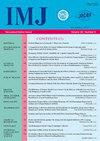DEGENERATIVE DISC DISEASE IN YOUNG PEOPLE. MEDICAL IMAGING TECHNIQUES
Q4 Medicine
引用次数: 0
Abstract
Degenerative changes of intervertebral discs is a very complicated process as a result of interaction of many factors: genetic, environmental, physical activity. Abnormalities in the vertebrae structure create the preconditions for the overload of the vertebral motor segment, which contributes to the spread of degenerative lesions and increases the risk of spinal injuries. Degenerative disc disease is one of the most common causes of back pain. The process of degeneration begins at a young age and in adulthood it often becomes widespread with a predominance of one or another localization. Methods of medical imaging occupy an important place in diagnosis of musculoskeletal pathologies. Radiography assesses the changes only in bone structures, but does not allow the visualization of soft tissues, which include not only the ligaments of the vertebral motor segment, but also the intervertebral discs. Magnetic resonance imaging is the most effective method for diagnosing degenerative changes in intervertebral discs. Possibilities of ultrasound examination in the diagnosis of early stage degenerative disc disease have not been studied enough. There were examined 147 patients aged 18−27 years with clinical and neurological signs of degenerative disease of cervical and lumbar spinal discs. Ultrasonic semiotics showed changes within the pulpal nucleus as an increased echogenicity and displacement back towards the fibrous ring, fibrous ring thinning, which indicated the disc protrusion. In patients with pain in neck and lower back, fragmentary imaging of the fibrous ring and prolapse of the disc contents into the lumen of spinal canal, indicating the development of hernias was found. The presence of herniated discs of cervical and lumbar spine in all cases coincided with the results of magnetic resonance imaging, and protrusion did in 91,4 % of cases. Thus, among medical imaging the ultrasonography is the most accessible and informative method for diagnosing degenerative changes in intervertebral discs of cervical and lumbar spine. Key words: degenerative disc disease, ultrasonography, cervical and lumbar intervertebral discs.年轻人的退行性椎间盘疾病。医学成像技术
椎间盘退行性变是一个非常复杂的过程,是遗传、环境、身体活动等多种因素共同作用的结果。椎骨结构的异常为椎体运动节段过载创造了先决条件,这有助于退行性病变的扩散,增加脊柱损伤的风险。椎间盘退行性疾病是背痛最常见的原因之一。退行性变的过程开始于年轻时,在成年后,它往往变得广泛,以一个或另一个定位为主。医学影像学方法在肌肉骨骼病理诊断中占有重要地位。x线摄影只能评估骨结构的变化,但不能显示软组织,其中不仅包括椎体运动节段的韧带,还包括椎间盘。磁共振成像是诊断椎间盘退行性改变最有效的方法。超声检查在早期退行性椎间盘疾病诊断中的可能性尚未得到足够的研究。147例患者年龄在18 ~ 27岁之间,均有颈腰椎间盘退行性疾病的临床和神经学症状。超声符号学显示髓核内回声增强,向纤维环后方移位,纤维环变薄,提示椎间盘突出。在颈部和下背部疼痛的患者中,发现纤维环和椎间盘内容物脱出到椎管管腔的碎片成像,提示疝的发展。所有病例的颈腰椎椎间盘突出与磁共振成像结果一致,91.4%的病例出现突出。因此,在医学影像学中,超声检查是诊断颈椎和腰椎椎间盘退行性变最方便和信息最丰富的方法。关键词:退行性椎间盘疾病,超声检查,颈腰椎间盘。
本文章由计算机程序翻译,如有差异,请以英文原文为准。
求助全文
约1分钟内获得全文
求助全文
来源期刊

International Medical Journal
医学-医学:内科
自引率
0.00%
发文量
21
审稿时长
4-8 weeks
期刊介绍:
The International Medical Journal is intended to provide a multidisciplinary forum for the exchange of ideas and information among professionals concerned with medicine and related disciplines in the world. It is recognized that many other disciplines have an important contribution to make in furthering knowledge of the physical life and mental life and the Editors welcome relevant contributions from them.
The Editors and Publishers wish to encourage a dialogue among the experts from different countries whose diverse cultures afford interesting and challenging alternatives to existing theories and practices. Priority will therefore be given to articles which are oriented to an international perspective. The journal will publish reviews of high quality on contemporary issues, significant clinical studies, and conceptual contributions, as well as serve in the rapid dissemination of important and relevant research findings.
The International Medical Journal (IMJ) was first established in 1994.
 求助内容:
求助内容: 应助结果提醒方式:
应助结果提醒方式:


